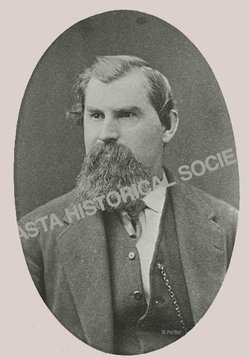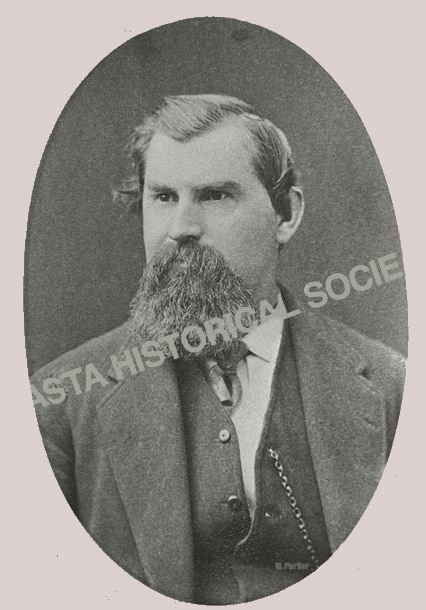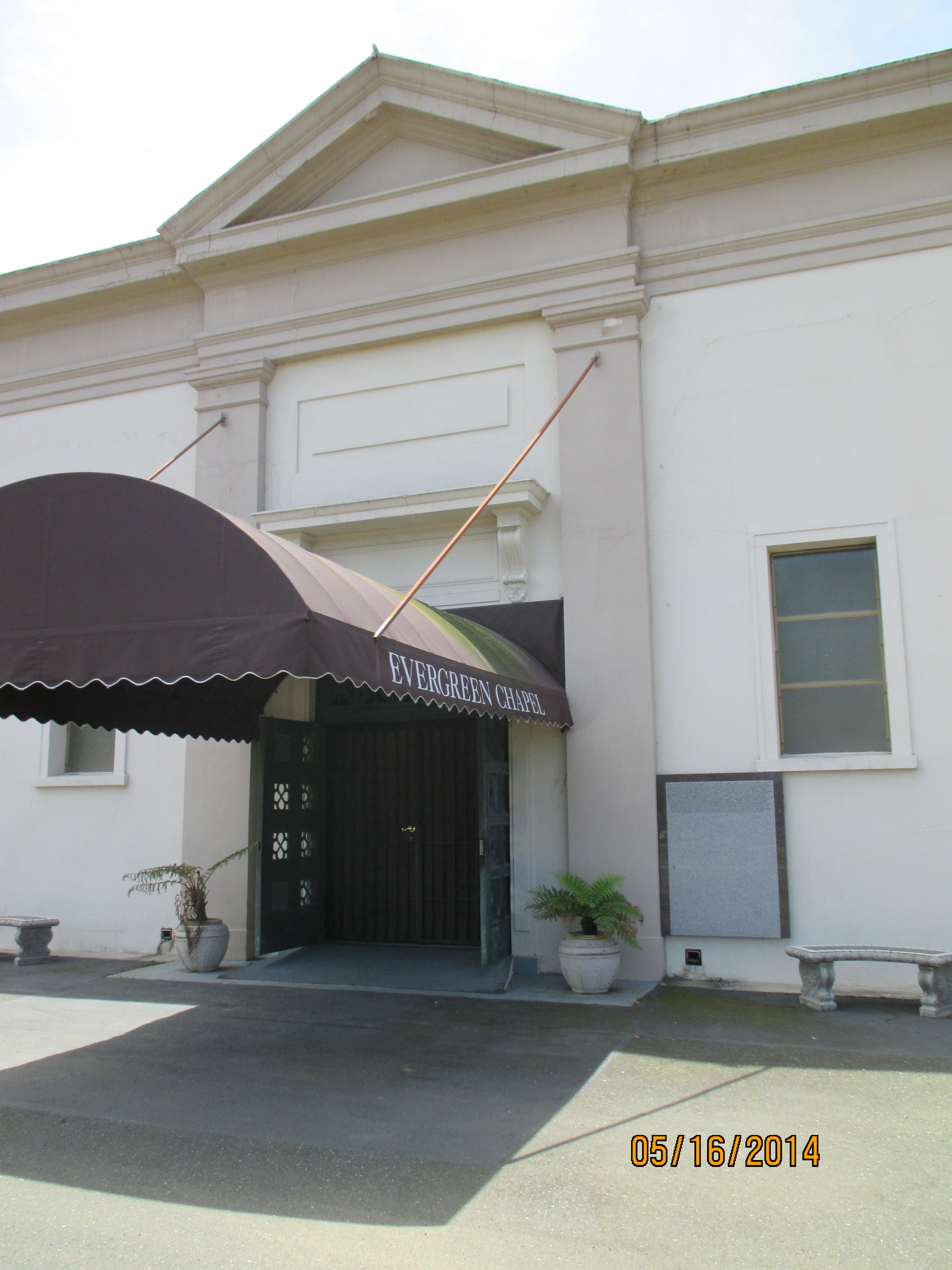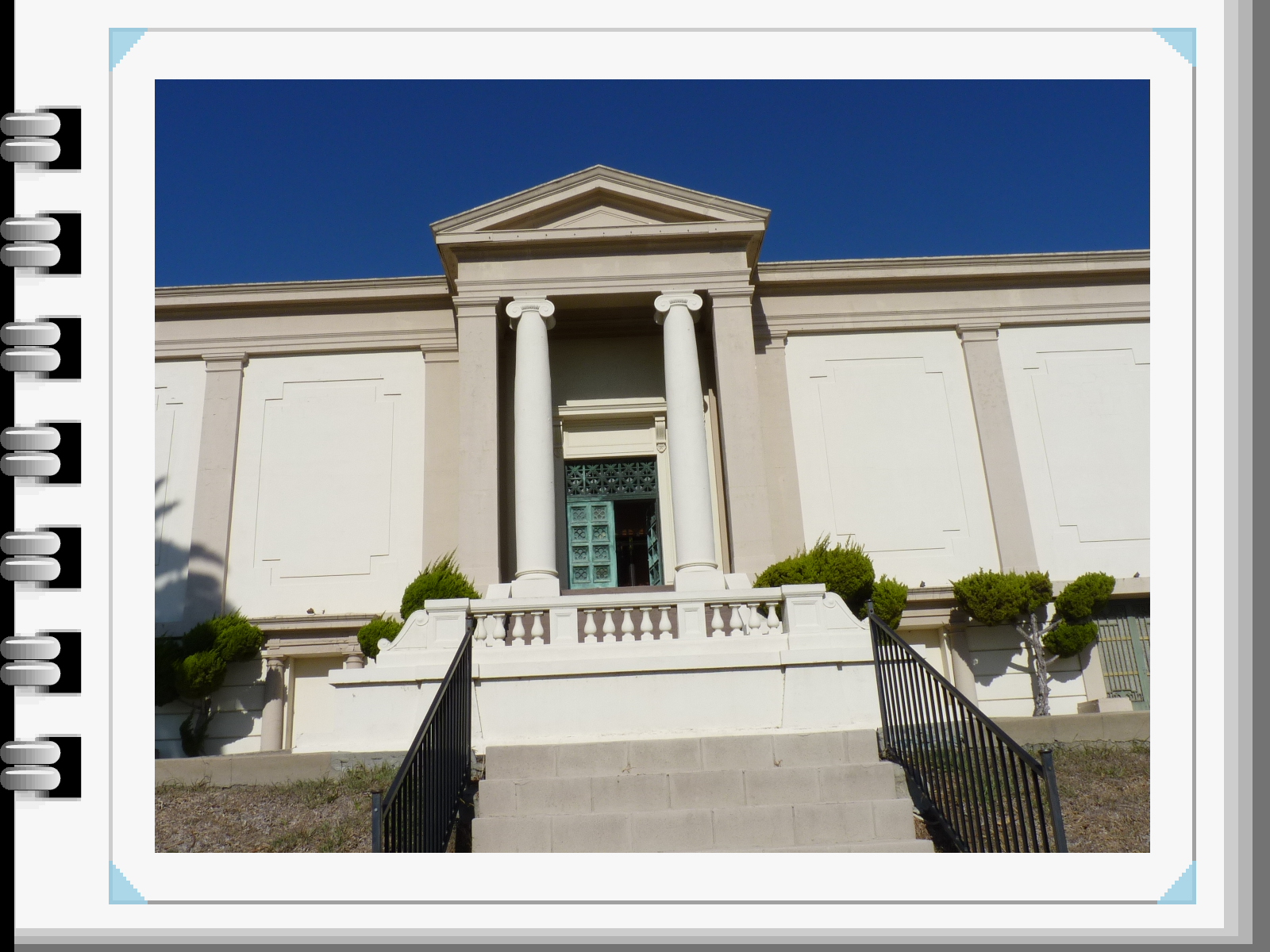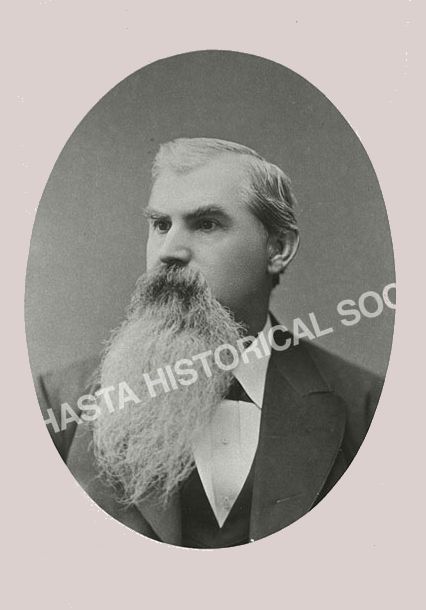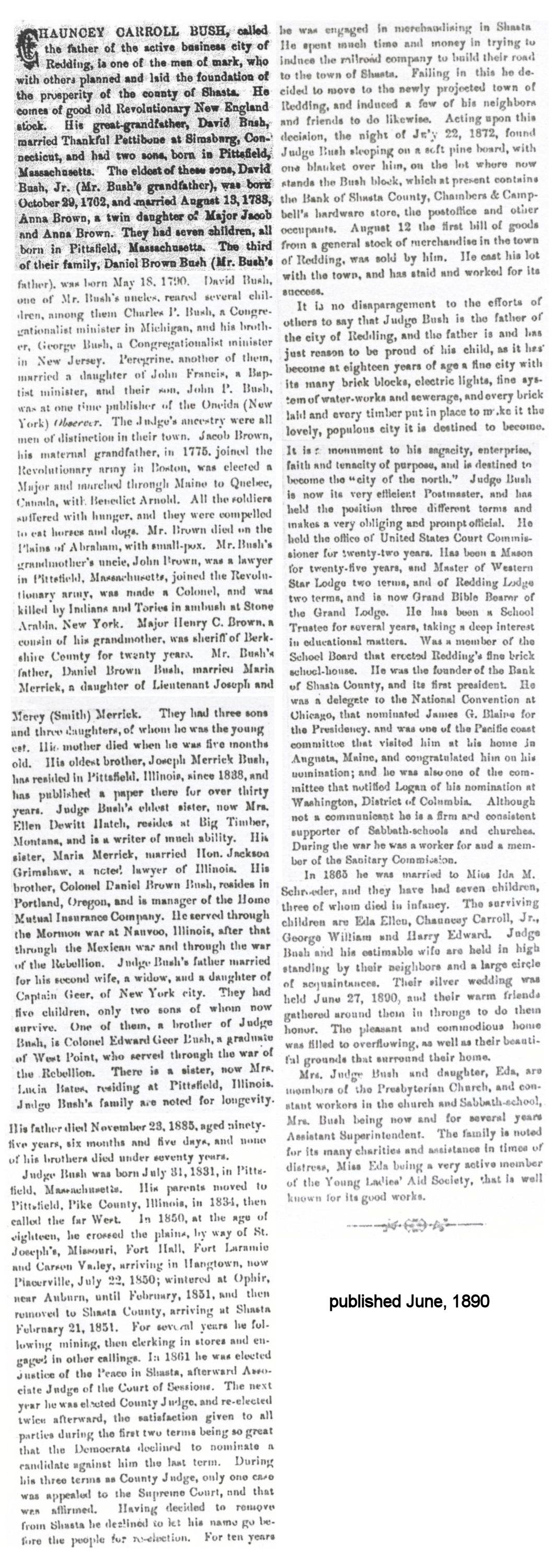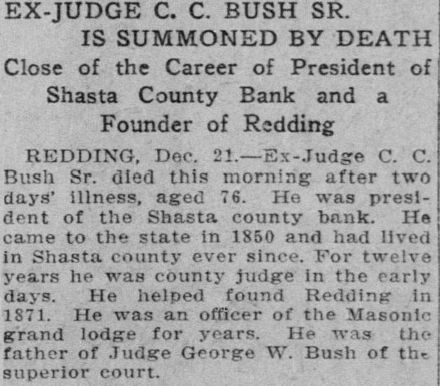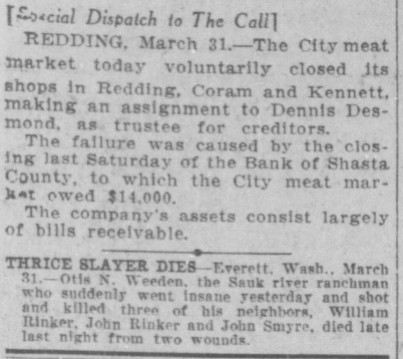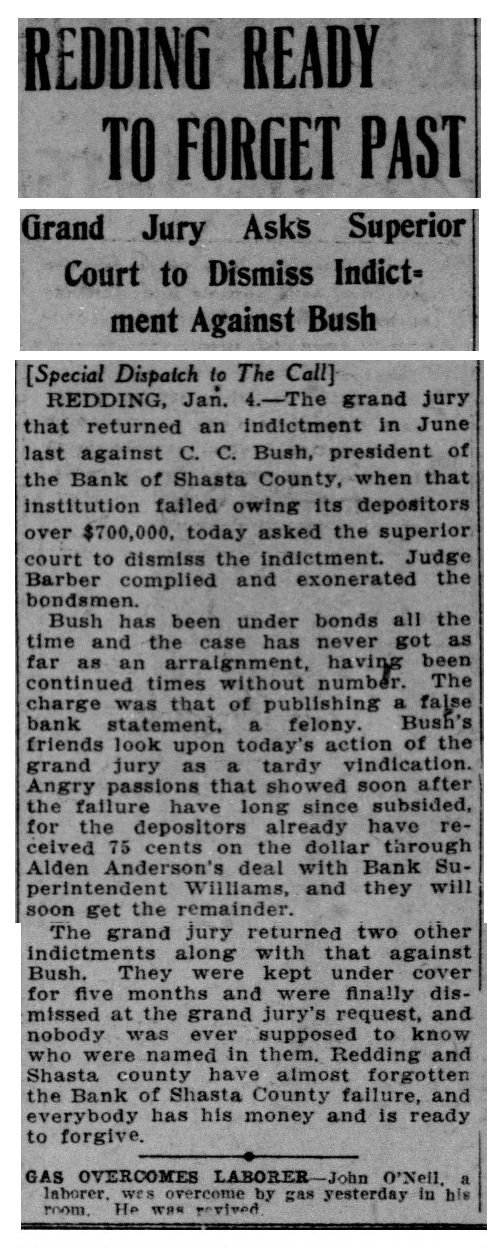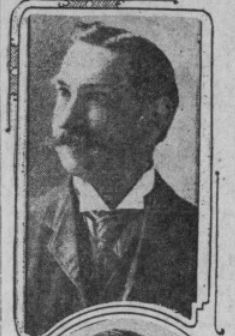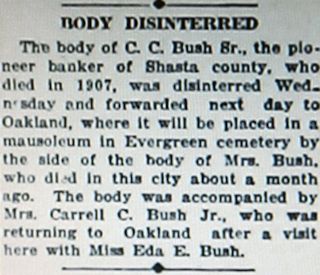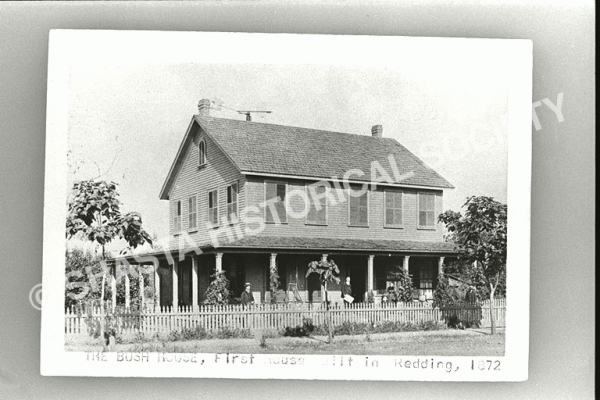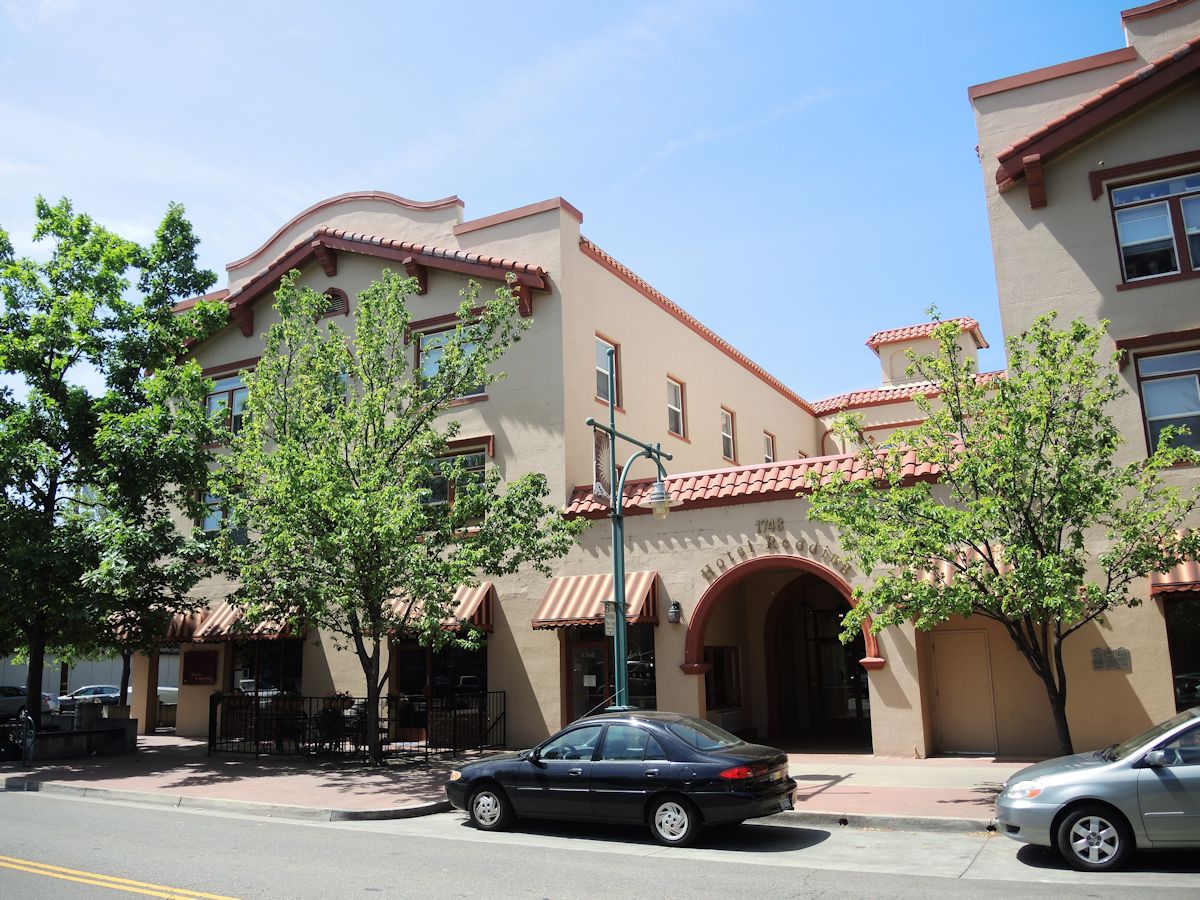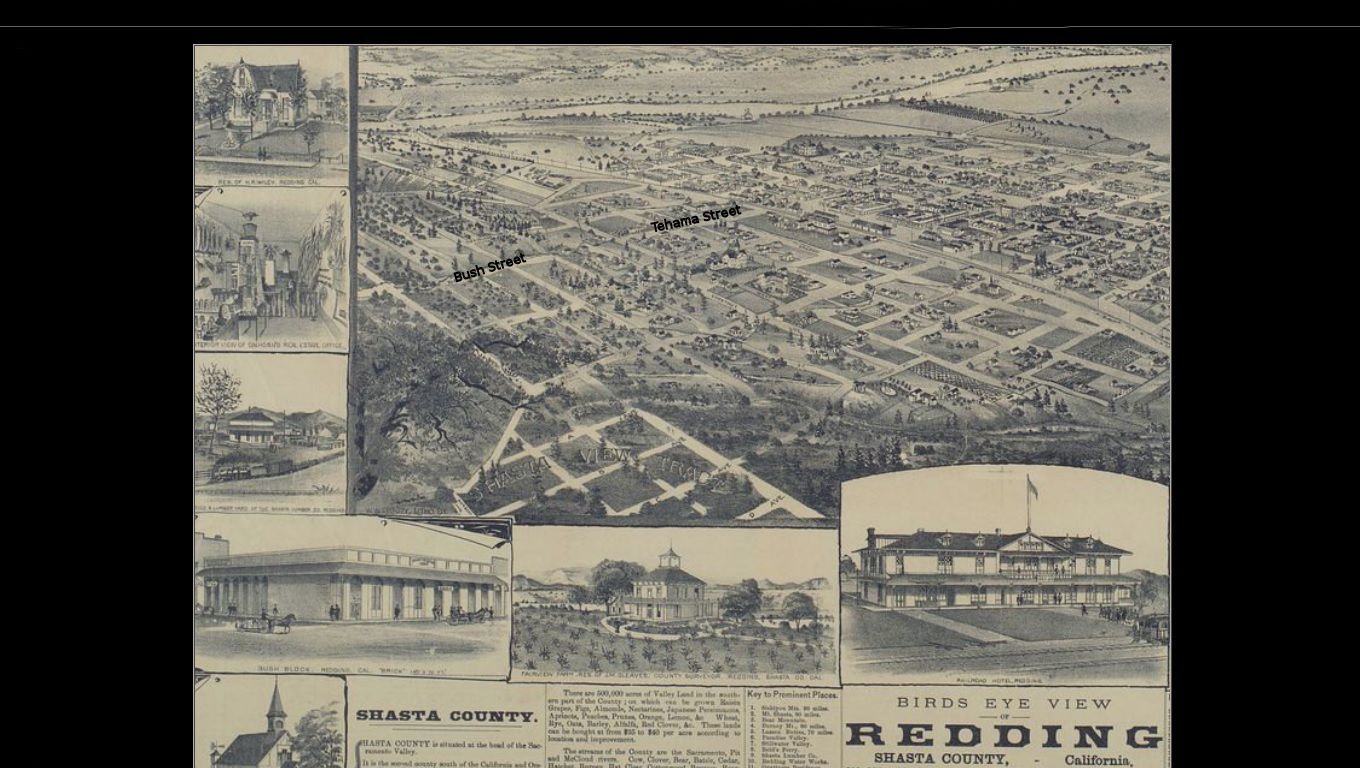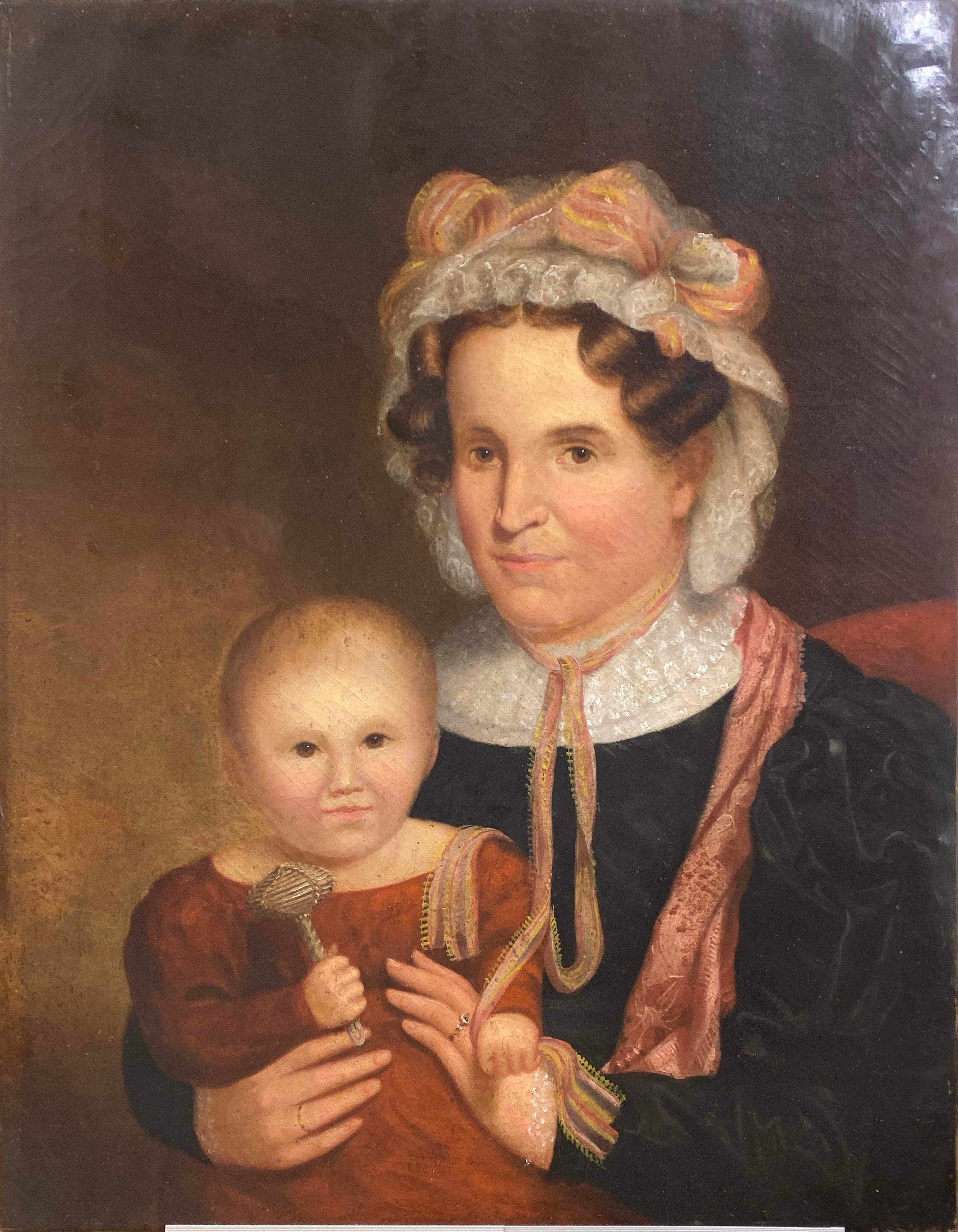The Life and Accomplishments of C.C. Bush, Sr.
The son of Col. Daniel Brown Bush (born May 18, 1790 in Pittsfield, Massachusetts) and Maria Merrick (born Oct. 11, 1799 in West Springfield, Hampden, Massachusetts). The youngest child of six, his mother died on Christmas day when he was 5 months old.
His father remarried to the widow, Mrs. Adeline (Geer) Sellon in February of 1834 and in the fall of that year removed the family to settle the new township of Pittsfield, Illinois. There, Maria was memorialized with a stone in Saint Stephens Episcopal Cemetery.
Maria's children, Chauncey's siblings, were Anna Maria Bush, who died at the age of five, Joseph Merrick Bush, Mrs. Ellen Dewitt (Bush) Hatch, Mrs. Maria Merrick (Bush) Grimshaw, and Col. Daniel Brown Bush, Jr.
His grandfather was David Bush Jr., born Oct. 9, 1762, also in Pittsfield, MA; and his great grandfather was David Bush Sr. who married Thankful Pettibone in Simsburg, Connecticut.
The children of his father's second wife, Chauncey's half siblings, were Eugene Bush, Col. Edward Geer Bush, Theodore Bush, and Mrs. Lucia (Bush) Bates.
In 1850, from April to August, 18 year old C. C. Bush traveled overland from Pike County, Illinois to Placerville in California, seeking his fortune in gold. He soon learned the local hills were played out.
In September, he moved to the Auburn gold fields, and by the end of February in 1851, settled in Shasta. There, he set up a claim in nearby French Gulch, engaged in mining and started a mule packing business, among other endeavors. He later earned income as a store clerk at Bull, Baker & Co.; then as the owner of his own mercantile business in the booming township of Shasta.
At the age of 30 in 1861, C. C. Bush was elected Justice of the Peace for Shasta City, and in 1862, Associate Judge of the Court of Sessions. From 1863 to 1866, he served as County Judge, then took a year off to study for the bar. In 1867, he was licensed to practice law. From 1868 to 1870, he resumed his County Judgeship in the Shasta County court.
He was married on June 27, 1865 to 18 year old Ida Matilda Schroeder, whose widowed mother and stepfather, William Ferdinand Baehr, brought her to Shasta from Sacramento as a young teen. The Rev. J. McLaughlin of Red Bluff officiated the ceremony at her parent's residence.
The couple's first child, Maria Merrick Bush, was born in 1866. A boy, who may have been named after his father, was born in 1867. He died in infancy during his first year and was buried in the Shasta Mason and IOOF Cemetery. In 1869, young Maria passed away due to complications of the measles, and was buried with her brother in the Bush plot.
The Bush's first surviving child, Eda Ellen Bush was born in March of 1869. Born in August of 1871 was C. Carroll (Chauncey Carroll Bush Jr.), the couple's first surviving son.
A member of the city's Masonic Western Star Lodge No. 2, Judge Bush was Steward in 1867, Junior Warden in 1871, 1872 and 1873, Senior Warden in 1874, and Worshipful Master in 1876 and 1877.
~~~~~~~~~~~~~~~~~~~~~~~~~~~~~~~~~~~~~~~~
The Railroad and the Birth of Redding
On August 22, 1870, the California & Oregon Railroad was consolidated with the Central Pacific Railroad to form the Central Pacific Railroad Co., a new corporation.
The former C & O, with tracks laid between Roseville and Chico, had planned to extend the route to Shasta, but officials of the new corporation decided instead to end the line at a level point on the Sacramento River five miles downstream called Poverty Flats.
From early 1871, C.C. Bush made several attempts to convince railroad management to adopt the original plan, but was told it would be too expensive to lay track uphill to Shasta City.
Resigning himself to the inevitable, on July 22, 1872, Chauncey moved himself and his mercantile business, C.C. Bush & Co., to the projected township. It was named by the C.P.R.R. in 1873 to honor a distinguished board member, Benjamin B. Redding, Land Commissioner for the Central Pacific Railroad Co.
As the new northern terminus of the Oregon Branch of the Central Pacific Railroad Co., Redding became a magnet for other Shasta businessmen, who literally dismantled their brick stores and followed Bush's lead.
Realizing another opportunity, C.C. partnered with Henry F. Johnson in an express freight business, Bush & Johnson, which transported goods from the train depot through Siskiyou county to Oregon.
~~~~~~~~~~~~~~~~~~~~~~~~~~~~~~~~~~~~~~~~
'The Father of Redding'
In the new township, the couple's son, George William Bush was born on December 27, 1873; daughter, Jennie Brown Bush was born in 1876; and son, Harry (Harrie) Edward Bush was born on September 2nd, 1880. Jennie died as an infant; her burial place assumed to be the family's Shasta cemetery plot. Her parents had seven children, with only four surviving childhood.
In 1874, the citizens of the township succeeded in changing its name to Reading, honoring the pioneer who first settled the area; and in December of 1878, C.C. and other Masons organized the Reading Lodge, No. 254. He was its first Worshipful Master after it was chartered in October of 1879, elected and installed for each of three consecutive terms. At the same time he was elected Junior Grand Warden of the State's Grand Lodge.
In 1880, the town's name was changed back to Redding after the railroad refused to recognize its new spelling on their station or timetables.
While the town's name reverted, the name of the Masonic Lodge did not. Bush later served the Mason's State Lodge as its Grand Bible Bearer, and was Worthy Grand Patron of the Order of the Eastern Star, Redding Chapter. Much later, in 1891, he was elected Grand Patron of the Eastern Star for the Grand Chapter of California.
---
Shasta County Directory of 1881
Bush & Johnson - fwd'g merchants
Bush, C. C. - Bush & Johnson
---
In 1884, Chauncey helped other investors found the Bank of Shasta County, with Henry F. Johnson as its first president and himself as cashier. It was located in the Bush building on Butte and California streets, inside the same store that housed a window for the post office. At their annual election meeting in 1885, the directors made him president, a position he held for many years.
---
Shasta County Directory of 1885
Bank of Shasta County -
C. C. Bush president, Frederick Grotefend cashier
Bush, C. C. -
Bush & Johnson, president Bank of Shasta County
Bush & Johnson - forwarding and commission merchants
---
With 600 citizens, the city of Redding was officially incorporated on October 4, 1887, and C. C. was elected President of the Board of Trustees.
As mayor, Bush lobbied to move the county seat from Shasta City to Redding; his friend, Judge Aaron Bell doing so in 1888, sealing the fate of the former pioneer boom town in which he once prospered. Coincidentally in the same year, the entity directly responsible for Shasta City's decline, the C.P.R.R., was itself abandoned; reduced to a non-operating subsidiary of the Southern Pacific Railroad which had taken over its track and operations in 1885.
In 1901, the Bank of Shasta County moved into a new building on the corner of Butte and Market Street, and in October of that year, Chauncey's son, cashier of the bank, C. Carroll Bush, married Annie Elizabeth Condon of Weaverville.
In December, his son George William Bush, attorney, Justice of the Peace and Judge of the Superior Court, married Charlotte Payne; and in 1902, was elected and installed Worshipful Master of the Lodge that his proud father helped to organize. Sadly, the couple's first child; C.C.'s first grandchild, passed away at birth in 1903. Baby William was laid to rest at Redding Cemetery.
---
1904 Redding City Directory
Bank of Shasta County,
C. C. Bush Mgr., Corner Butte and Market Sts.
Bush & Perry, Attorneys, Bush Building.
---
~ San Francisco Call, Volume 98, Number 39, 9 July 1905
"Order Eastern Star, Redding Chapter No. 44. of Redding, Shasta County, on the last Tuesday in June celebrated the silver anniversary of its institution in the lodgeroom in Jacobson's Hall. There were present a large number of the members of the chapter, visitors from chapters in adjacent towns and the grand matron. Mrs. Pauline Wetzlar Dohrman. There was an interesting programme of entertainment appropriate to the occasion, and then there was announced another anniversary, the fortieth of the wedding of Judge Chauncey Carroll Bush, the first patron and his wife, Ida Matilda Bush, the second matron. The couple were married again, the ceremony being performed by their son, George William Bush Justice of the Peace, under a large wedding bell in an adjoining hall. Nellie Marie Dobrowsky, who was marshal at the institution of the chapter, marshaling the bridal procession. The affair was a very enjoyable one throughout, and during the evening there was a lengthy commemorative address in the chapter by Judge Bush."
~~~~~~~~~~~~~~~~~~~~~~~~~~~~~~~~~~~~~~~
Death and Burial
In October of 1907, the Grand Lodge of Masons had their Annual Session in Golden Gate Commandery Hall in San Francisco. Chauncey C. Bush of Redding attended as the Grand Bible Bearer for the occasion. It was to be his last official duty.
LA Herald, 21 Dec. 1907
REDDING-- Judge C. C. Bush, one of the most prominent citizens of Shasta county, died today, aged 76 years.
Chauncey Carroll Bush Sr., after a two day illness, died from complications of Bright's Disease at the age of 76, December 21, 1907. Department one of the superior court adjourned that Saturday morning out of respect. He was buried in Grave 4 of Lot 16 in Block 12 of the NW Section of Redding Cemetery (now known as Redding Memorial Park), an institution which he and fellow members of the Masonic and Oddfellows lodges had founded and built less than two decades earlier.
C.C. Jr. continued his father's legacy name with his second son, born 6 months later on July 2, 1908.
~~~~~~~~~~~~~~~~~~~~~~~~~~~~~~~~~~~~~~~
The Bush Family's Fall from Grace
C. Carroll Bush was named president of the Shasta County Bank after his father's death. Within four years of his passing, the bank that Bush Sr. founded was forced to close by the newly appointed State Superintendent of Banks, after a revealing audit discovered an unhealthy condition of high liabilities and low assets. Carroll Jr., like his dad, was a kindhearted man and his continued practice of handshake contracts and sympathetic loan management was blamed for the failure; specifically a secret no-collateral loan the junior Bush had made to lumberman Joe Terry in the amount of $205,000 - 20 times the amount he was authorized to loan by the board of directors. The closure, which affected a large portion of the citizenry, had an immediate chilling effect on the Bush family's popularity.
~sources: The Bank of Shasta County by Mary Graham Bush, pub. 1973 in 'The Covered Wagon', Shasta Historical Society; and ten articles from the San Francisco Call Newspaper, dated Nov. 1910 to Jan. 1912.
Of the city's population of 3,400, about 1,200 Redding citizens had money in the bank when its doors were closed on March 25th, 1911. More than 12,000 residents of the county were also depositors, and when the news broke, a mob formed at the corner of Market and Butte Streets.
The nearby Bank of Northern California also experienced a run of panicked depositors fearing the same fate, even though its financial base was solid. Its vice president, Edward L. Bailey, grew so distraught over the pressure of the situation forced upon him, that he took his own life on the 6th of April; friends finding his body on the grave of his mother.
The San Francisco Call printed an inflammatory article on April 16th, "The young bank president, who has involved his mother, his sister and his brothers, goes about his pretty home and the town like a man unable to comprehend what has happened...". Bush Jr., on the morning of June 18th, 1911, was charged, then arrested, and quickly released on bond.
On July 26th, his home and furnishings were completely destroyed by a fire that also consumed a nearby business. Condon, 5 1/2 year old son of Carroll and Anne, managed to save the life of his napping infant sister, Mary K. The boy rushed through the flames and carried her to safety, while his mother and baby brother were visiting at the house next door. The cause of the fire was undetermined.
In January of 1912, after new owners of the bank's assets partially reimbursed its former customers, the criminal indictment against C.C. Bush Jr. was withdrawn and the bail bond was removed. Exonerated, he nonetheless departed the county and reestablished himself in Alameda, where he found employment as an administrative assistant for an Oakland cemetery.
Mrs. Bush and her daughter remained in Redding, but the former socialites were rarely seen in public. Eda however, quietly continued her church activities and on January 3, 1913, sang at the funeral of William E. Menzel. A family friend, he was one of two men who provided bail for her brother. Mr. Menzel's attorney, George W. Bush, left Redding shortly after the ceremony. Later in 1913, Harry Bush, a mining metallurgist, married Ruth Waterhouse at brother George's new home in L.A., and resumed his career in a number of counties other than Shasta.
~~~~~~~~~~~~~~~~~~~~~~~~~~~~~~~~~~~~~~~
An Exiled Son's Redress
On April 14, 1920, Ida Matilda passed away in the historic pioneer Bush house she shared with Eda Ellen. Her body was removed from the city by her son, Carroll, for burial near his home in Oakland.
The body of Judge Chauncey Carroll Bush Sr., and that of his infant grandson William, were quietly disinterred from the Redding Cemetery, Wednesday morning, May 12, 1920. They were accompanied to Evergreen Cemetery in Oakland by C. Carroll Jr's wife, where on Friday, May 14, they were placed beside Ida in the Chapel. Baby William, son of George and Charlotte, now shares Chauncey's crypt.
The Bush Family's 70 year presence in Shasta County ended when their legendary home was sold and Eda Ellen departed to live with her brother Harry in Pasadena.
~~~~~~~~~~~~~~~~~~~~~~~~~~~~~~~~~~~~~~~
The Lost Bush Legacy
In 1927, the 2 story Bush residence was razed, and the new Redding Hotel was built upon the site where the first house in the city had stood since 1872.
Bush Street, a short drive which ran east to west between Magnolia and Walnut street in the Magnolia section of town, was later renamed an extension of Tehama Street, even though the two roads are not directly connected.
To date, no official City of Redding public landmark, monument, school, park, or street exists to honor its "most prominent citizen."
~~~~~~~~~~~~~~~~~~~~~~~~~~~~~~~~~~~~~~~
Private Tributes
After 99 years, Chauncey Carroll Bush, the "Father of Redding" - its first resident, merchant, postmaster, fireman and mayor - was memorialized with a plaque and life-size bronze likeness seated on one end of a concrete bench in Caldwell Park. The unassuming statue was conceived, majority funded, and commissioned by agents of a local commercial enterprise, who, after receiving permission for its placement, donated it to the city in 2006.
C.C. Bush memorabilia can be found on the web and in Redding at The Shasta Historical Society and the Shasta County Library.
Both Reading Lodge No. 254 and Western Star Lodge No. 2 in Old Shasta have portraits of Judge Bush in their private collections.
Links in the bio to related memorials are provided as a convenience. The author is not responsible for their content.
~bio researched, compiled and written by Forestier
The Life and Accomplishments of C.C. Bush, Sr.
The son of Col. Daniel Brown Bush (born May 18, 1790 in Pittsfield, Massachusetts) and Maria Merrick (born Oct. 11, 1799 in West Springfield, Hampden, Massachusetts). The youngest child of six, his mother died on Christmas day when he was 5 months old.
His father remarried to the widow, Mrs. Adeline (Geer) Sellon in February of 1834 and in the fall of that year removed the family to settle the new township of Pittsfield, Illinois. There, Maria was memorialized with a stone in Saint Stephens Episcopal Cemetery.
Maria's children, Chauncey's siblings, were Anna Maria Bush, who died at the age of five, Joseph Merrick Bush, Mrs. Ellen Dewitt (Bush) Hatch, Mrs. Maria Merrick (Bush) Grimshaw, and Col. Daniel Brown Bush, Jr.
His grandfather was David Bush Jr., born Oct. 9, 1762, also in Pittsfield, MA; and his great grandfather was David Bush Sr. who married Thankful Pettibone in Simsburg, Connecticut.
The children of his father's second wife, Chauncey's half siblings, were Eugene Bush, Col. Edward Geer Bush, Theodore Bush, and Mrs. Lucia (Bush) Bates.
In 1850, from April to August, 18 year old C. C. Bush traveled overland from Pike County, Illinois to Placerville in California, seeking his fortune in gold. He soon learned the local hills were played out.
In September, he moved to the Auburn gold fields, and by the end of February in 1851, settled in Shasta. There, he set up a claim in nearby French Gulch, engaged in mining and started a mule packing business, among other endeavors. He later earned income as a store clerk at Bull, Baker & Co.; then as the owner of his own mercantile business in the booming township of Shasta.
At the age of 30 in 1861, C. C. Bush was elected Justice of the Peace for Shasta City, and in 1862, Associate Judge of the Court of Sessions. From 1863 to 1866, he served as County Judge, then took a year off to study for the bar. In 1867, he was licensed to practice law. From 1868 to 1870, he resumed his County Judgeship in the Shasta County court.
He was married on June 27, 1865 to 18 year old Ida Matilda Schroeder, whose widowed mother and stepfather, William Ferdinand Baehr, brought her to Shasta from Sacramento as a young teen. The Rev. J. McLaughlin of Red Bluff officiated the ceremony at her parent's residence.
The couple's first child, Maria Merrick Bush, was born in 1866. A boy, who may have been named after his father, was born in 1867. He died in infancy during his first year and was buried in the Shasta Mason and IOOF Cemetery. In 1869, young Maria passed away due to complications of the measles, and was buried with her brother in the Bush plot.
The Bush's first surviving child, Eda Ellen Bush was born in March of 1869. Born in August of 1871 was C. Carroll (Chauncey Carroll Bush Jr.), the couple's first surviving son.
A member of the city's Masonic Western Star Lodge No. 2, Judge Bush was Steward in 1867, Junior Warden in 1871, 1872 and 1873, Senior Warden in 1874, and Worshipful Master in 1876 and 1877.
~~~~~~~~~~~~~~~~~~~~~~~~~~~~~~~~~~~~~~~~
The Railroad and the Birth of Redding
On August 22, 1870, the California & Oregon Railroad was consolidated with the Central Pacific Railroad to form the Central Pacific Railroad Co., a new corporation.
The former C & O, with tracks laid between Roseville and Chico, had planned to extend the route to Shasta, but officials of the new corporation decided instead to end the line at a level point on the Sacramento River five miles downstream called Poverty Flats.
From early 1871, C.C. Bush made several attempts to convince railroad management to adopt the original plan, but was told it would be too expensive to lay track uphill to Shasta City.
Resigning himself to the inevitable, on July 22, 1872, Chauncey moved himself and his mercantile business, C.C. Bush & Co., to the projected township. It was named by the C.P.R.R. in 1873 to honor a distinguished board member, Benjamin B. Redding, Land Commissioner for the Central Pacific Railroad Co.
As the new northern terminus of the Oregon Branch of the Central Pacific Railroad Co., Redding became a magnet for other Shasta businessmen, who literally dismantled their brick stores and followed Bush's lead.
Realizing another opportunity, C.C. partnered with Henry F. Johnson in an express freight business, Bush & Johnson, which transported goods from the train depot through Siskiyou county to Oregon.
~~~~~~~~~~~~~~~~~~~~~~~~~~~~~~~~~~~~~~~~
'The Father of Redding'
In the new township, the couple's son, George William Bush was born on December 27, 1873; daughter, Jennie Brown Bush was born in 1876; and son, Harry (Harrie) Edward Bush was born on September 2nd, 1880. Jennie died as an infant; her burial place assumed to be the family's Shasta cemetery plot. Her parents had seven children, with only four surviving childhood.
In 1874, the citizens of the township succeeded in changing its name to Reading, honoring the pioneer who first settled the area; and in December of 1878, C.C. and other Masons organized the Reading Lodge, No. 254. He was its first Worshipful Master after it was chartered in October of 1879, elected and installed for each of three consecutive terms. At the same time he was elected Junior Grand Warden of the State's Grand Lodge.
In 1880, the town's name was changed back to Redding after the railroad refused to recognize its new spelling on their station or timetables.
While the town's name reverted, the name of the Masonic Lodge did not. Bush later served the Mason's State Lodge as its Grand Bible Bearer, and was Worthy Grand Patron of the Order of the Eastern Star, Redding Chapter. Much later, in 1891, he was elected Grand Patron of the Eastern Star for the Grand Chapter of California.
---
Shasta County Directory of 1881
Bush & Johnson - fwd'g merchants
Bush, C. C. - Bush & Johnson
---
In 1884, Chauncey helped other investors found the Bank of Shasta County, with Henry F. Johnson as its first president and himself as cashier. It was located in the Bush building on Butte and California streets, inside the same store that housed a window for the post office. At their annual election meeting in 1885, the directors made him president, a position he held for many years.
---
Shasta County Directory of 1885
Bank of Shasta County -
C. C. Bush president, Frederick Grotefend cashier
Bush, C. C. -
Bush & Johnson, president Bank of Shasta County
Bush & Johnson - forwarding and commission merchants
---
With 600 citizens, the city of Redding was officially incorporated on October 4, 1887, and C. C. was elected President of the Board of Trustees.
As mayor, Bush lobbied to move the county seat from Shasta City to Redding; his friend, Judge Aaron Bell doing so in 1888, sealing the fate of the former pioneer boom town in which he once prospered. Coincidentally in the same year, the entity directly responsible for Shasta City's decline, the C.P.R.R., was itself abandoned; reduced to a non-operating subsidiary of the Southern Pacific Railroad which had taken over its track and operations in 1885.
In 1901, the Bank of Shasta County moved into a new building on the corner of Butte and Market Street, and in October of that year, Chauncey's son, cashier of the bank, C. Carroll Bush, married Annie Elizabeth Condon of Weaverville.
In December, his son George William Bush, attorney, Justice of the Peace and Judge of the Superior Court, married Charlotte Payne; and in 1902, was elected and installed Worshipful Master of the Lodge that his proud father helped to organize. Sadly, the couple's first child; C.C.'s first grandchild, passed away at birth in 1903. Baby William was laid to rest at Redding Cemetery.
---
1904 Redding City Directory
Bank of Shasta County,
C. C. Bush Mgr., Corner Butte and Market Sts.
Bush & Perry, Attorneys, Bush Building.
---
~ San Francisco Call, Volume 98, Number 39, 9 July 1905
"Order Eastern Star, Redding Chapter No. 44. of Redding, Shasta County, on the last Tuesday in June celebrated the silver anniversary of its institution in the lodgeroom in Jacobson's Hall. There were present a large number of the members of the chapter, visitors from chapters in adjacent towns and the grand matron. Mrs. Pauline Wetzlar Dohrman. There was an interesting programme of entertainment appropriate to the occasion, and then there was announced another anniversary, the fortieth of the wedding of Judge Chauncey Carroll Bush, the first patron and his wife, Ida Matilda Bush, the second matron. The couple were married again, the ceremony being performed by their son, George William Bush Justice of the Peace, under a large wedding bell in an adjoining hall. Nellie Marie Dobrowsky, who was marshal at the institution of the chapter, marshaling the bridal procession. The affair was a very enjoyable one throughout, and during the evening there was a lengthy commemorative address in the chapter by Judge Bush."
~~~~~~~~~~~~~~~~~~~~~~~~~~~~~~~~~~~~~~~
Death and Burial
In October of 1907, the Grand Lodge of Masons had their Annual Session in Golden Gate Commandery Hall in San Francisco. Chauncey C. Bush of Redding attended as the Grand Bible Bearer for the occasion. It was to be his last official duty.
LA Herald, 21 Dec. 1907
REDDING-- Judge C. C. Bush, one of the most prominent citizens of Shasta county, died today, aged 76 years.
Chauncey Carroll Bush Sr., after a two day illness, died from complications of Bright's Disease at the age of 76, December 21, 1907. Department one of the superior court adjourned that Saturday morning out of respect. He was buried in Grave 4 of Lot 16 in Block 12 of the NW Section of Redding Cemetery (now known as Redding Memorial Park), an institution which he and fellow members of the Masonic and Oddfellows lodges had founded and built less than two decades earlier.
C.C. Jr. continued his father's legacy name with his second son, born 6 months later on July 2, 1908.
~~~~~~~~~~~~~~~~~~~~~~~~~~~~~~~~~~~~~~~
The Bush Family's Fall from Grace
C. Carroll Bush was named president of the Shasta County Bank after his father's death. Within four years of his passing, the bank that Bush Sr. founded was forced to close by the newly appointed State Superintendent of Banks, after a revealing audit discovered an unhealthy condition of high liabilities and low assets. Carroll Jr., like his dad, was a kindhearted man and his continued practice of handshake contracts and sympathetic loan management was blamed for the failure; specifically a secret no-collateral loan the junior Bush had made to lumberman Joe Terry in the amount of $205,000 - 20 times the amount he was authorized to loan by the board of directors. The closure, which affected a large portion of the citizenry, had an immediate chilling effect on the Bush family's popularity.
~sources: The Bank of Shasta County by Mary Graham Bush, pub. 1973 in 'The Covered Wagon', Shasta Historical Society; and ten articles from the San Francisco Call Newspaper, dated Nov. 1910 to Jan. 1912.
Of the city's population of 3,400, about 1,200 Redding citizens had money in the bank when its doors were closed on March 25th, 1911. More than 12,000 residents of the county were also depositors, and when the news broke, a mob formed at the corner of Market and Butte Streets.
The nearby Bank of Northern California also experienced a run of panicked depositors fearing the same fate, even though its financial base was solid. Its vice president, Edward L. Bailey, grew so distraught over the pressure of the situation forced upon him, that he took his own life on the 6th of April; friends finding his body on the grave of his mother.
The San Francisco Call printed an inflammatory article on April 16th, "The young bank president, who has involved his mother, his sister and his brothers, goes about his pretty home and the town like a man unable to comprehend what has happened...". Bush Jr., on the morning of June 18th, 1911, was charged, then arrested, and quickly released on bond.
On July 26th, his home and furnishings were completely destroyed by a fire that also consumed a nearby business. Condon, 5 1/2 year old son of Carroll and Anne, managed to save the life of his napping infant sister, Mary K. The boy rushed through the flames and carried her to safety, while his mother and baby brother were visiting at the house next door. The cause of the fire was undetermined.
In January of 1912, after new owners of the bank's assets partially reimbursed its former customers, the criminal indictment against C.C. Bush Jr. was withdrawn and the bail bond was removed. Exonerated, he nonetheless departed the county and reestablished himself in Alameda, where he found employment as an administrative assistant for an Oakland cemetery.
Mrs. Bush and her daughter remained in Redding, but the former socialites were rarely seen in public. Eda however, quietly continued her church activities and on January 3, 1913, sang at the funeral of William E. Menzel. A family friend, he was one of two men who provided bail for her brother. Mr. Menzel's attorney, George W. Bush, left Redding shortly after the ceremony. Later in 1913, Harry Bush, a mining metallurgist, married Ruth Waterhouse at brother George's new home in L.A., and resumed his career in a number of counties other than Shasta.
~~~~~~~~~~~~~~~~~~~~~~~~~~~~~~~~~~~~~~~
An Exiled Son's Redress
On April 14, 1920, Ida Matilda passed away in the historic pioneer Bush house she shared with Eda Ellen. Her body was removed from the city by her son, Carroll, for burial near his home in Oakland.
The body of Judge Chauncey Carroll Bush Sr., and that of his infant grandson William, were quietly disinterred from the Redding Cemetery, Wednesday morning, May 12, 1920. They were accompanied to Evergreen Cemetery in Oakland by C. Carroll Jr's wife, where on Friday, May 14, they were placed beside Ida in the Chapel. Baby William, son of George and Charlotte, now shares Chauncey's crypt.
The Bush Family's 70 year presence in Shasta County ended when their legendary home was sold and Eda Ellen departed to live with her brother Harry in Pasadena.
~~~~~~~~~~~~~~~~~~~~~~~~~~~~~~~~~~~~~~~
The Lost Bush Legacy
In 1927, the 2 story Bush residence was razed, and the new Redding Hotel was built upon the site where the first house in the city had stood since 1872.
Bush Street, a short drive which ran east to west between Magnolia and Walnut street in the Magnolia section of town, was later renamed an extension of Tehama Street, even though the two roads are not directly connected.
To date, no official City of Redding public landmark, monument, school, park, or street exists to honor its "most prominent citizen."
~~~~~~~~~~~~~~~~~~~~~~~~~~~~~~~~~~~~~~~
Private Tributes
After 99 years, Chauncey Carroll Bush, the "Father of Redding" - its first resident, merchant, postmaster, fireman and mayor - was memorialized with a plaque and life-size bronze likeness seated on one end of a concrete bench in Caldwell Park. The unassuming statue was conceived, majority funded, and commissioned by agents of a local commercial enterprise, who, after receiving permission for its placement, donated it to the city in 2006.
C.C. Bush memorabilia can be found on the web and in Redding at The Shasta Historical Society and the Shasta County Library.
Both Reading Lodge No. 254 and Western Star Lodge No. 2 in Old Shasta have portraits of Judge Bush in their private collections.
Links in the bio to related memorials are provided as a convenience. The author is not responsible for their content.
~bio researched, compiled and written by Forestier
